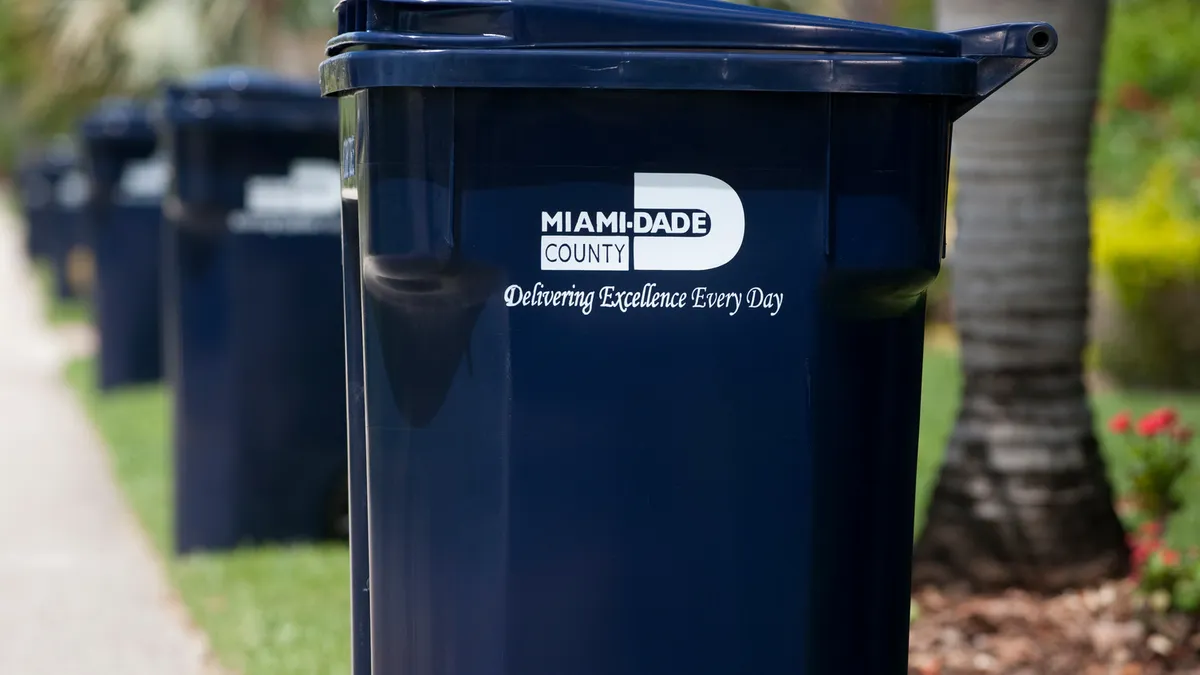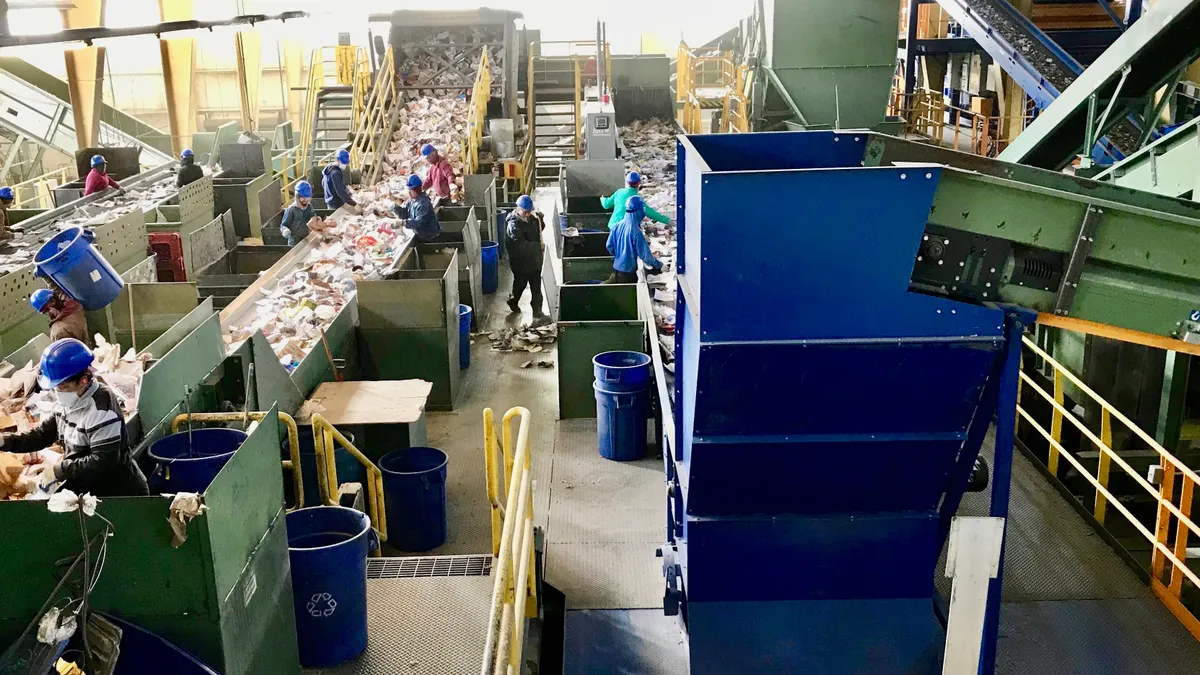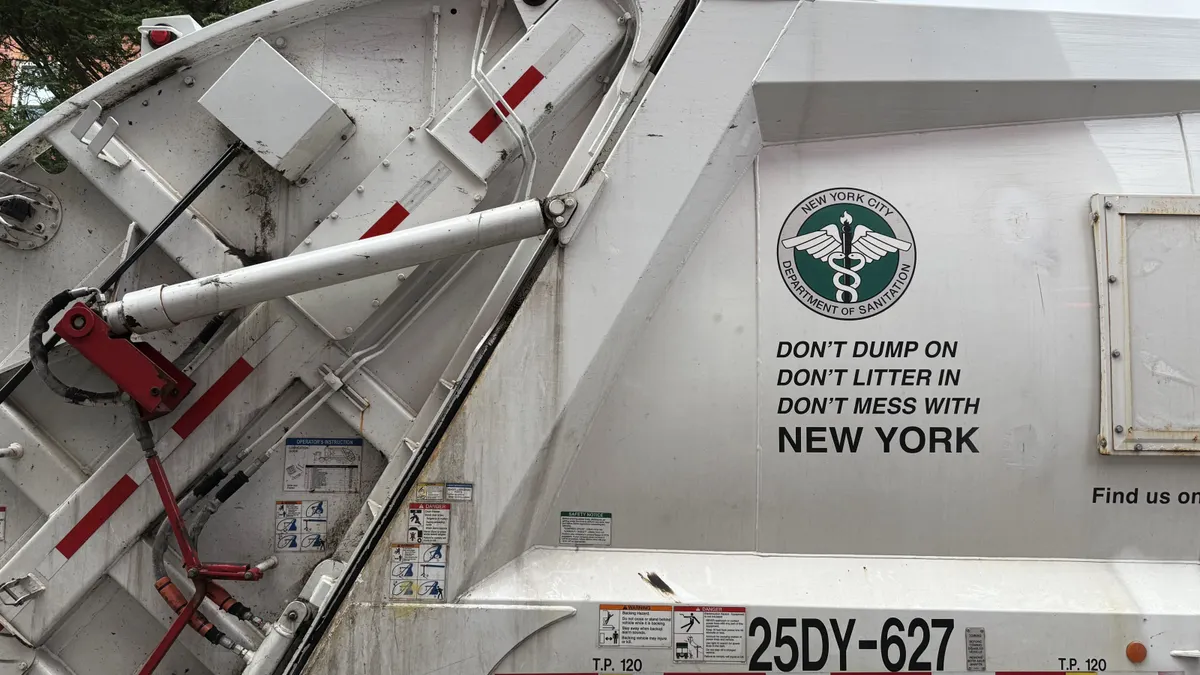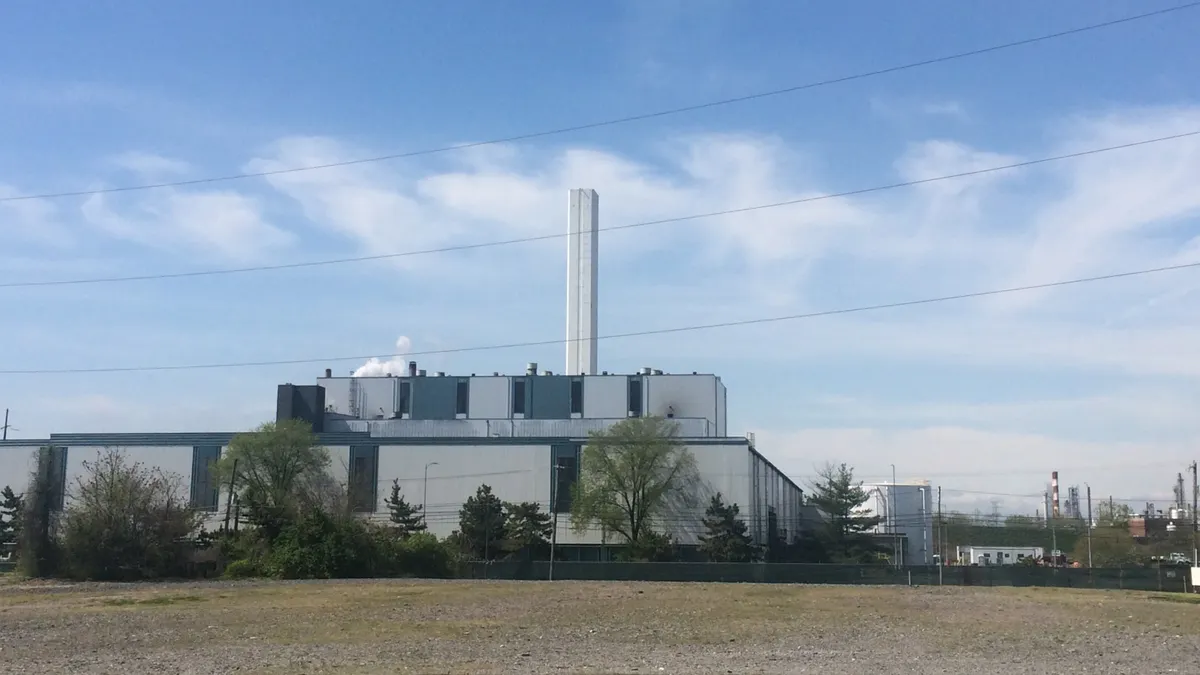Editor's Note: This piece was written by Kristin Kinder, a product manager at Ecova. The opinions represented in this piece are independent of Waste Dive's views.
Increasingly, employees and consumers expect organizations to participate in cutting down the 258 million tons of waste that Americans generate per year. A recent international study revealed that a third of consumers now choose to buy from brands they believe are doing social or environmental good. Regulatory bodies are also pressing for change. Notably, the State of California requires businesses to keep food waste out of landfills and the City of New York recently enacted recycling rules for businesses.
Together, these changes are causing organizations to rethink outdated waste management processes. Waste reduction is important to preserve both natural resources and a business’s bottom line.
Many organizations, however, remain in the dark when it comes to the costs and benefits of changing their waste management practices. In today’s new era of waste management, finding money in our waste often begins with a closer look at data, the foundation for setting realistic targets and measuring ongoing success.
So how can organizations turn data into better diversion, regulatory compliance, and cost savings?
Find the Right Metrics
While embracing new sustainability practices and jumping in head-first is tempting, companies often demonstrate long-term success by slowing down, identifying their measurable data, and then setting benchmarks against it. Identifying the right data to measure progress against is critical.
Most important, your goals should align to metrics that your organization has the ability to measure continuously. The more detailed data points you can collect, the better. Ideally, data as granular as waste generation at the site-level will help organizations identify trends and targets to focus on by geographic region, brand-type, or site function.
Many companies focus on diversion (the percentage of total waste that’s kept out of the landfill) as their metric for waste reduction. Because waste can fluctuate year-over-year due to the economy, opening or closing locations, and changes in packaging, measuring tons of waste generated against a specific metric, such as items sold or people served, can be much more effective for driving change, identifying opportunities, and measuring progress.
Set Baselines and Benchmarks
Establishing a baseline to determine how realistic waste goals are in a given timeframe and mapping benchmarks for how to achieve them will turn goals from a hope into a plan. For example, variability in recycling programs available or employee propensity to sort waste could impact progress toward waste reduction goals. Likewise, some departments might be able to move you faster toward your goal than others. For instance, if you’re a hotel, you might receive the biggest return from starting a composting program with your kitchen staff rather than requiring housekeeping to sort recyclables.
By accounting for current waste levels, regional practices, department abilities, and employee propensity to sort material, organizations can work backwards from their goals. This helps paint an accurate picture of waste demands and frame more realistic objectives.
View from the Site-Level
Understanding how individual sites contribute to the bigger picture will drive a tailored but cohesive strategy. Many companies have left selecting and managing waste haulers to site managers. In addition to their existing responsibilities, these managers must select between a convoluted mix of major national, regional and small local haulers, each with different pricing, rate increase schedules, recycling programs, service levels, and reporting abilities. The resulting site-to-site disparity often results in unchecked levels of service and costs, and as long as waste goes away each week, many companies don’t ask questions.
From understanding recycling programs available by geographic location and local regulations to maximizing container volumes and service frequencies, many multi-site businesses are seeing the value to better understanding their waste profile at their sites.
Right-sizing containers and service days ensures that sites pay for only the service they actually use and have the proper containers to collect recycling and food or yard waste.
Scientifically Study your Waste Stream
Many companies assume that as long as their waste goes away each week, they don’t need to worry about it. A quick look in a dumpster might tell you otherwise. Auditing waste means selecting a representative sample, sorting waste into predetermined categories, and recording weights and volumes for each category. Although waste audits that detail exact waste composition are ideal, simply looking in a waste container can be illuminating.
The data from these audits is invaluable – it can support regulatory compliance, determine how current recycling programs are performing, and identify items with the highest potential to remove from upstream.
Get Started
Compiling data from disparate sources can feel overwhelming, even paralyzing. While having the patience to gather the right data will set you up for success, your data collection and analysis capabilities will inevitably evolve. Our best recommendation? Just start with what you know. Your future bottom line (and Mother Earth) will thank you.
















